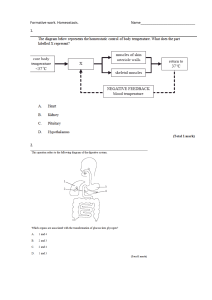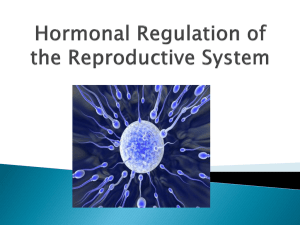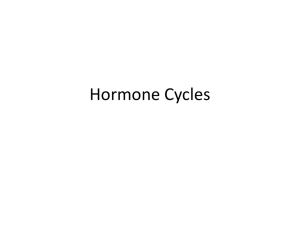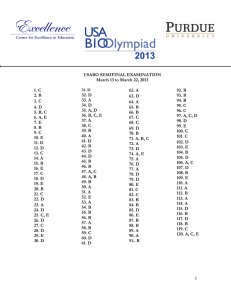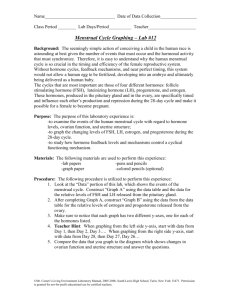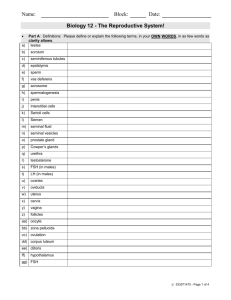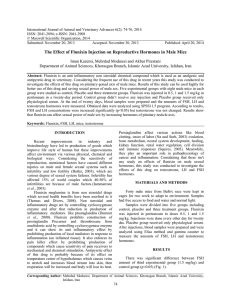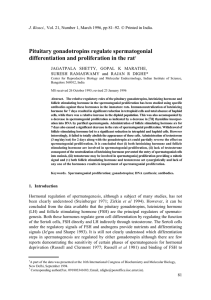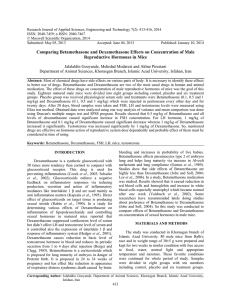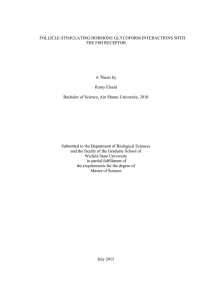Read this passage carefully and discuss with your partner the... REPRODUCTIVE CYCLE
advertisement
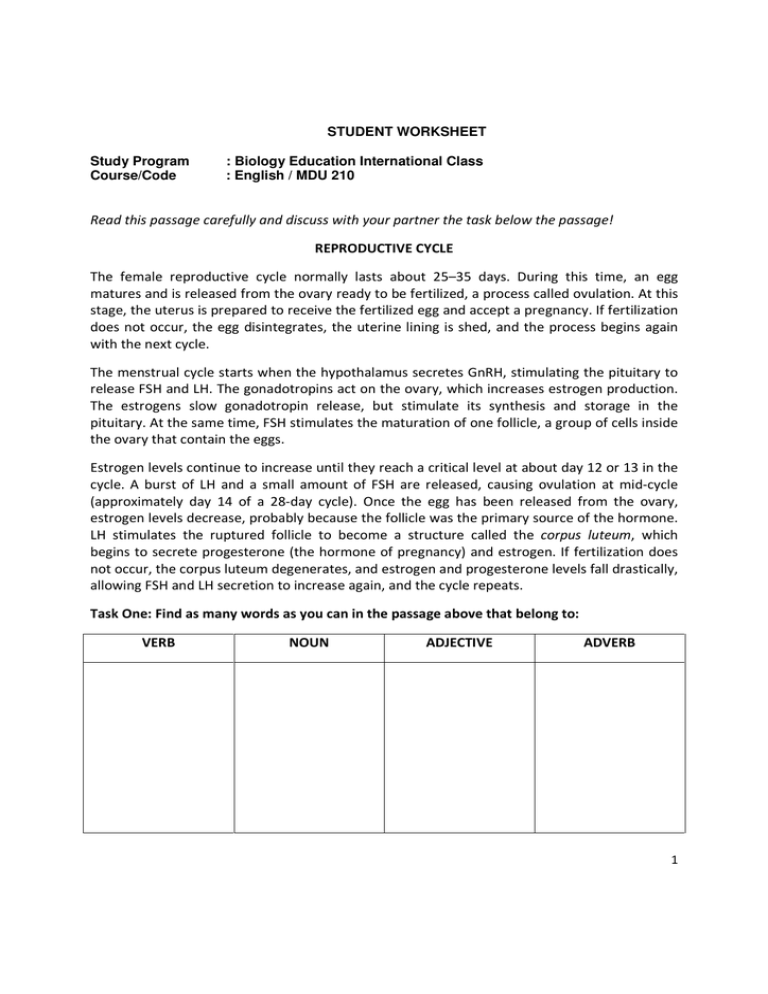
STUDENT WORKSHEET Study Program Course/Code : Biology Education International Class : English / MDU 210 Read this passage carefully and discuss with your partner the task below the passage! REPRODUCTIVE CYCLE The female reproductive cycle normally lasts about 25–35 days. During this time, an egg matures and is released from the ovary ready to be fertilized, a process called ovulation. At this stage, the uterus is prepared to receive the fertilized egg and accept a pregnancy. If fertilization does not occur, the egg disintegrates, the uterine lining is shed, and the process begins again with the next cycle. The menstrual cycle starts when the hypothalamus secretes GnRH, stimulating the pituitary to release FSH and LH. The gonadotropins act on the ovary, which increases estrogen production. The estrogens slow gonadotropin release, but stimulate its synthesis and storage in the pituitary. At the same time, FSH stimulates the maturation of one follicle, a group of cells inside the ovary that contain the eggs. Estrogen levels continue to increase until they reach a critical level at about day 12 or 13 in the cycle. A burst of LH and a small amount of FSH are released, causing ovulation at mid-cycle (approximately day 14 of a 28-day cycle). Once the egg has been released from the ovary, estrogen levels decrease, probably because the follicle was the primary source of the hormone. LH stimulates the ruptured follicle to become a structure called the corpus luteum, which begins to secrete progesterone (the hormone of pregnancy) and estrogen. If fertilization does not occur, the corpus luteum degenerates, and estrogen and progesterone levels fall drastically, allowing FSH and LH secretion to increase again, and the cycle repeats. Task One: Find as many words as you can in the passage above that belong to: VERB NOUN ADJECTIVE ADVERB 1 Task Two From the words you have mentioned above, identify the words with either prefixes or suffixes by ticking the words in the above table! Can you create other words with prefixes or suffixes from the words in task one? Task Three Share the results in your group and prepare for class presentation 2 STUDENT EXERCISE SHEET II Read this passage carefully ! Male Reproduction At puberty, the male hypothalamus begins to produce gonadotropin releasing hormone (GnRH). This hormone is a small peptide that acts on the pituitary gland and stimulates it to release two proteins called luteinizing hormone (LH) and follicle-stimulating hormone (FSH). Together, LH and FSH are called gonadotropins because they stimulate the gonads. These two hormones are also found in females; in fact, they are named for their actions in females. Both FSH and LH act on the testes. FSH causes sperm production, while LH causes testosterone production. Testosterone inhibits the release of GnRH by the hypothalamus and gonadotropin release by the pituitary. As puberty progresses, the amount of testosterone required to inhibit the hypothalamus increases until about age 17, when the threshold is established. After this age, testosterone and sperm production remain fairly constant throughout a male’s adult life unless environmental or health factors intervene. During puberty, testosterone stimulates the development of male secondary sexual characteristics, the physical features associated with being male. The voice deepens, facial hair appears, and skeletal and muscle growth are stimulated. In addition, sperm production begins. Growth in height and muscle mass begins during early puberty when it is usually most rapid, and continues for several years, often until age 21 and occasionally until age 25. Task One: Find the Synonym VERB NOUN ADJECTIVE ADVERB Produce = Adult = small = Fairly = Act = Height = rapid = Occasionally = Appear = Require = Task Two: Find the Antonym VERB Begin = Stimulate = NOUN Male = ADJECTIVE ADVERB Several = Early = Constant = Usually = Continue = Increase = 3 4 The word science is derived from a Latin verb meaning ~to know~ Science is a way of knowing about the natural world. It developed out of our curiosity about ourselves, other lifeforms, our planet, and the universe. Striving to understand seems to be one of our basic urgency. At the heart of science is inquiry, a search for information and explanation, often focusing on specific questions. Inquiry drove Darwin to seek answers in nature for how species adapt to their environments. And today inquiry drives the genome analyses that are helping us understand biological unity and diversity at the molecular level. In fact, the inquisitive mind is the engine that drives all progress in biology. There is no formula for successful scientific inquiry. no single scientific method with a rule book that researchers must rigidly follow. As in all quests, science includes elements of challenge, adventure, and luck, along with careful planning, reasoning, creativity, cooperation, competition, patience, and the persistence to overcome setbacks. Such 5 diverse elements of inquiry make science far less structured than most people realize. That said, it is possible to distill certain characteristics that help to distinguish science from other ways of describing and explaining nature. Biologists use two main types of scientific inquiry: discovery science and hypothesis-based science. Discovery science is mostly about describing nature. Hypothesis-based science is mostly about explaining nature. Most scientific inquiries combine these two research approaches. 6
